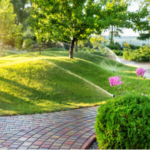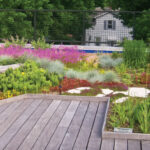Sustainable landscaping is becoming increasingly popular as more people become aware of the impact that traditional landscaping practices can have on the environment. By using sustainable landscaping techniques, homeowners and businesses can create beautiful outdoor spaces that are not only aesthetically pleasing but also environmentally friendly.
One key aspect of sustainable landscaping is the use of native plants. These plants are naturally adapted to the local climate and soil conditions, which means they require less water, fertilizers, and pesticides to thrive. By incorporating native plants into their landscapes, homeowners can reduce the need for chemical inputs and conserve water, while also providing habitat for local wildlife.
In addition to using native plants, sustainable landscaping also involves practices such as reducing water usage, recycling yard waste, and using organic fertilizers. One popular method of reducing water usage is the use of rainwater harvesting systems, which capture rainwater from roofs and store it in tanks for use in watering plants. Composting yard waste, such as grass clippings and leaves, can also help reduce the need for chemical fertilizers, while providing valuable nutrients for the soil.
Another important aspect of sustainable landscaping is encouraging biodiversity. By creating diverse plantings that include a variety of species, homeowners can attract a wider range of pollinators and other beneficial insects, which can help control pest populations naturally. Providing habitat for birds, butterflies, and other wildlife can also enhance the overall ecological health of the landscape.
One of the biggest benefits of sustainable landscaping is its ability to reduce maintenance costs and time. By using native plants and natural pest control methods, homeowners can reduce the need for frequent watering, mowing, and chemical treatments. This not only saves money, but also reduces the amount of time and effort required to maintain the landscape, allowing homeowners to spend more time enjoying their outdoor spaces.
Overall, sustainable landscaping offers a way for homeowners and businesses to create beautiful and environmentally friendly outdoor spaces that benefit both people and the planet. By incorporating practices such as using native plants, reducing water usage, recycling yard waste, and encouraging biodiversity, individuals can create landscapes that are not only attractive but also sustainable for the long term. With the growing interest in environmental sustainability, sustainable landscaping is sure to become even more popular in the years to come.
















